Abstract
1. To isolate the blue cones of the normal eye, blue sine-wave gratings were superimposed on a bright yellow background. Threshold contrasts for resolution of the gratings were then determined.
2. Under these conditions visual acuity for high contrast gratings on four normal subjects was on the average 0·31 min-1. This is about a factor of 6 lower than grating acuity under optimal conditions.
3. The contrast sensitivity of two subjects who lack the normal red and green receptor mechanisms was measured using blue sinusoidally modulated gratings. Visual acuity was found to be greatly reduced from normal. The low acuity of these individuals is due to both a reduction in contrast sensitivity and a reduction in resolution.
4. The spatial resolving characteristics of these subjects resembles the vision of the normal eye under conditions which isolate the blue sensitive mechanisms.
5. The vision of the cone monochromat differs significantly from that of the more typical rod monochromat. The rod monochromat has even lower acuity than the blue cone monochromat for high contrast gratings but has much greater contrast sensitivity for gratings of low spatial frequency.
Full text
PDF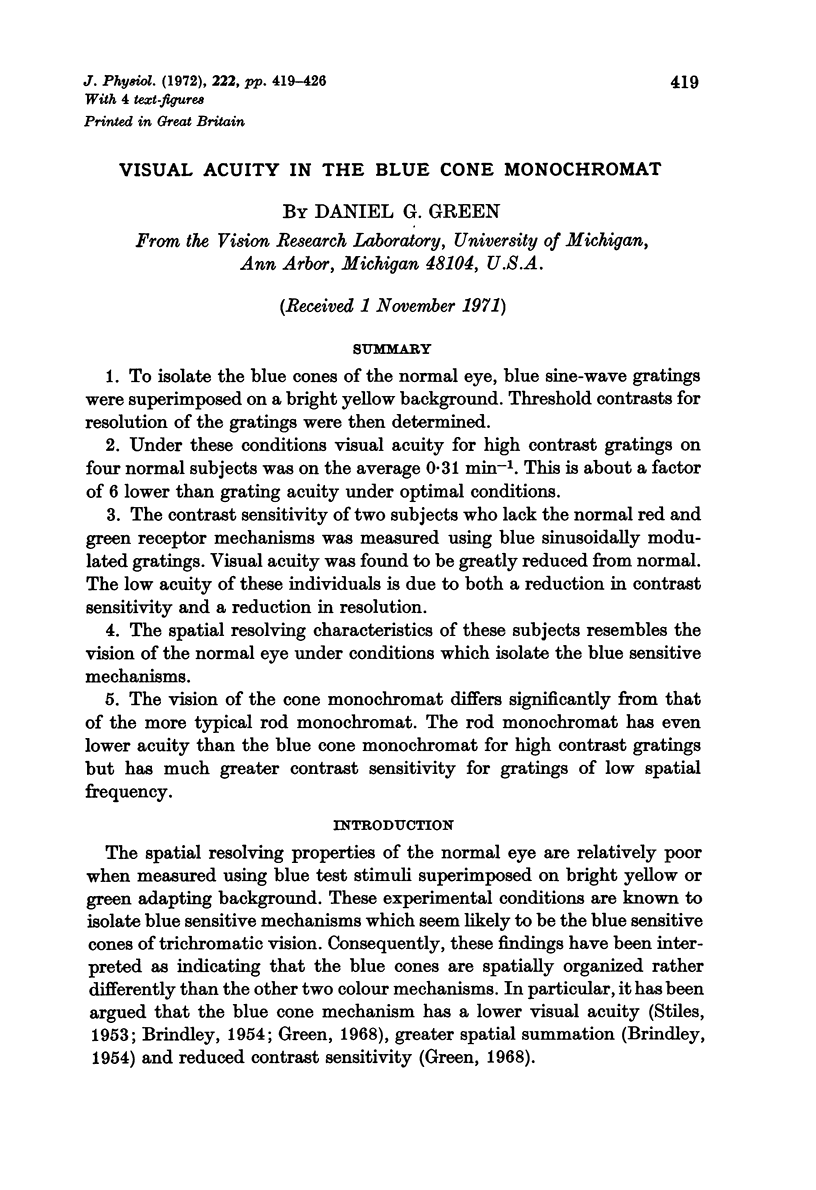
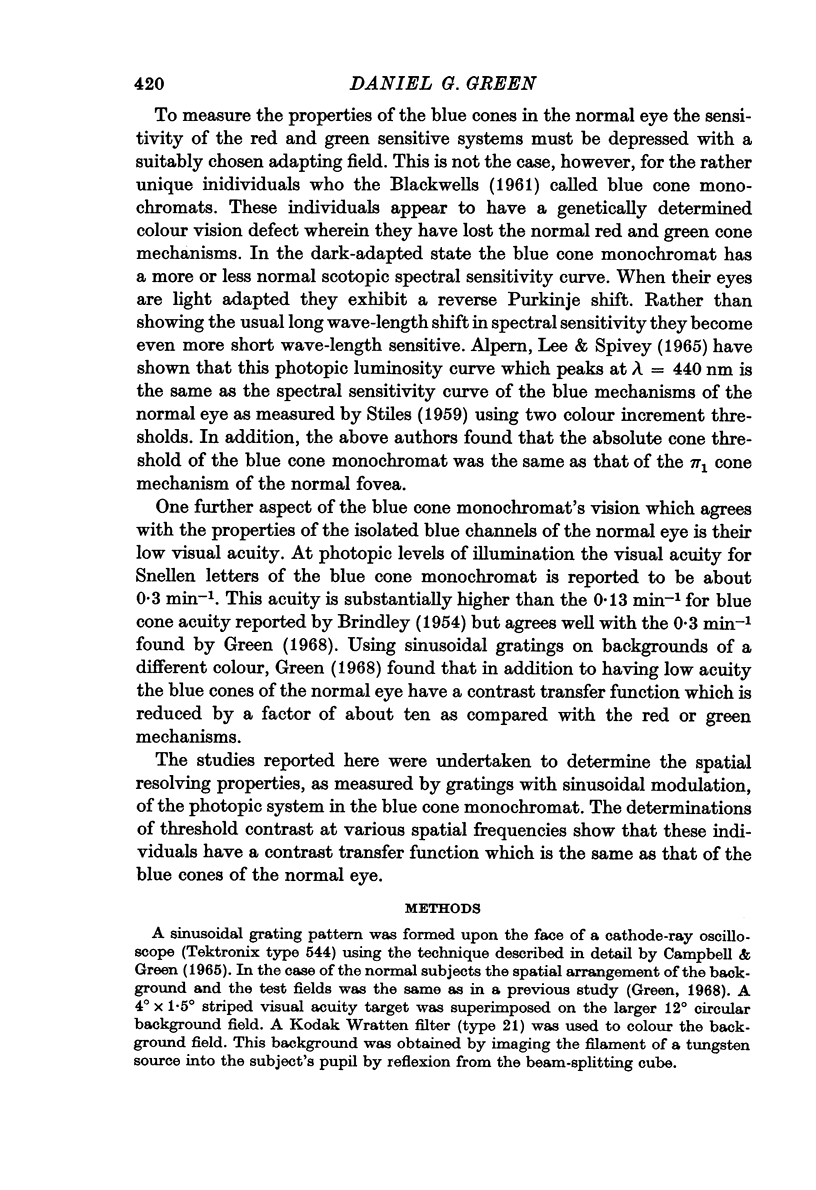
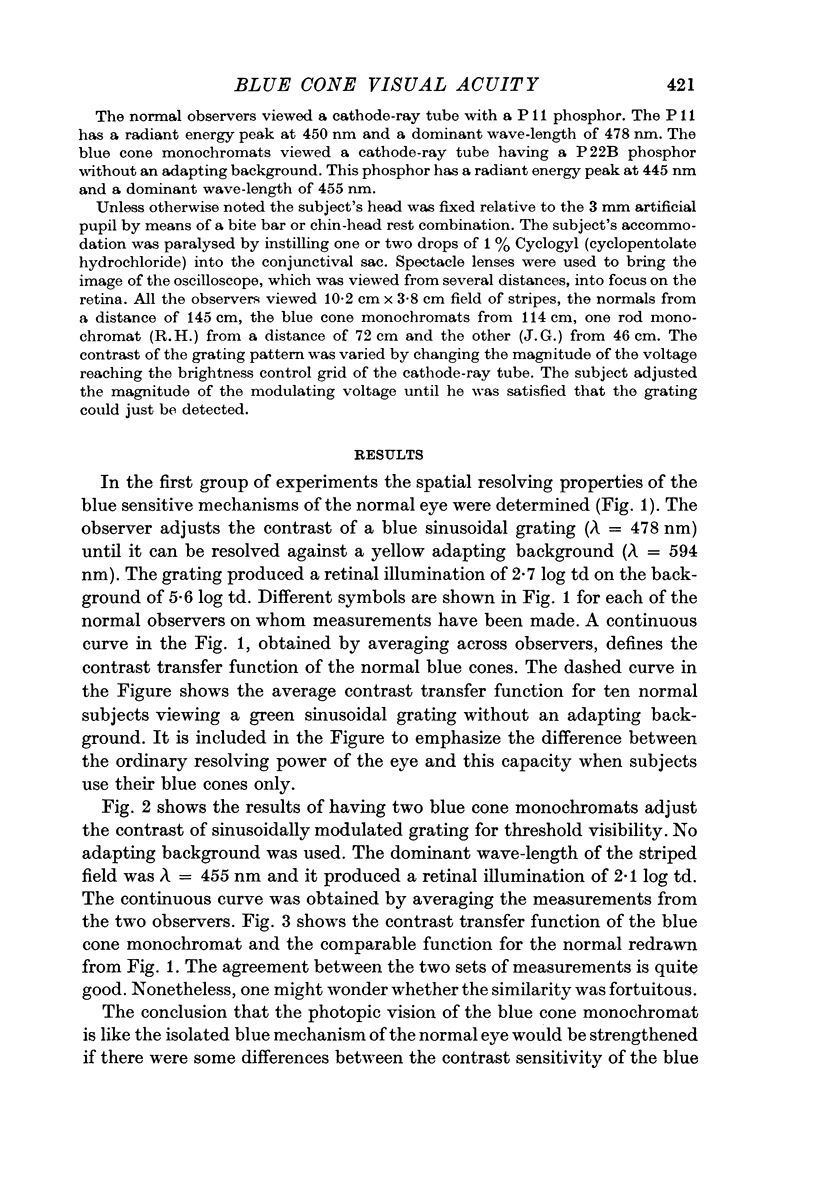

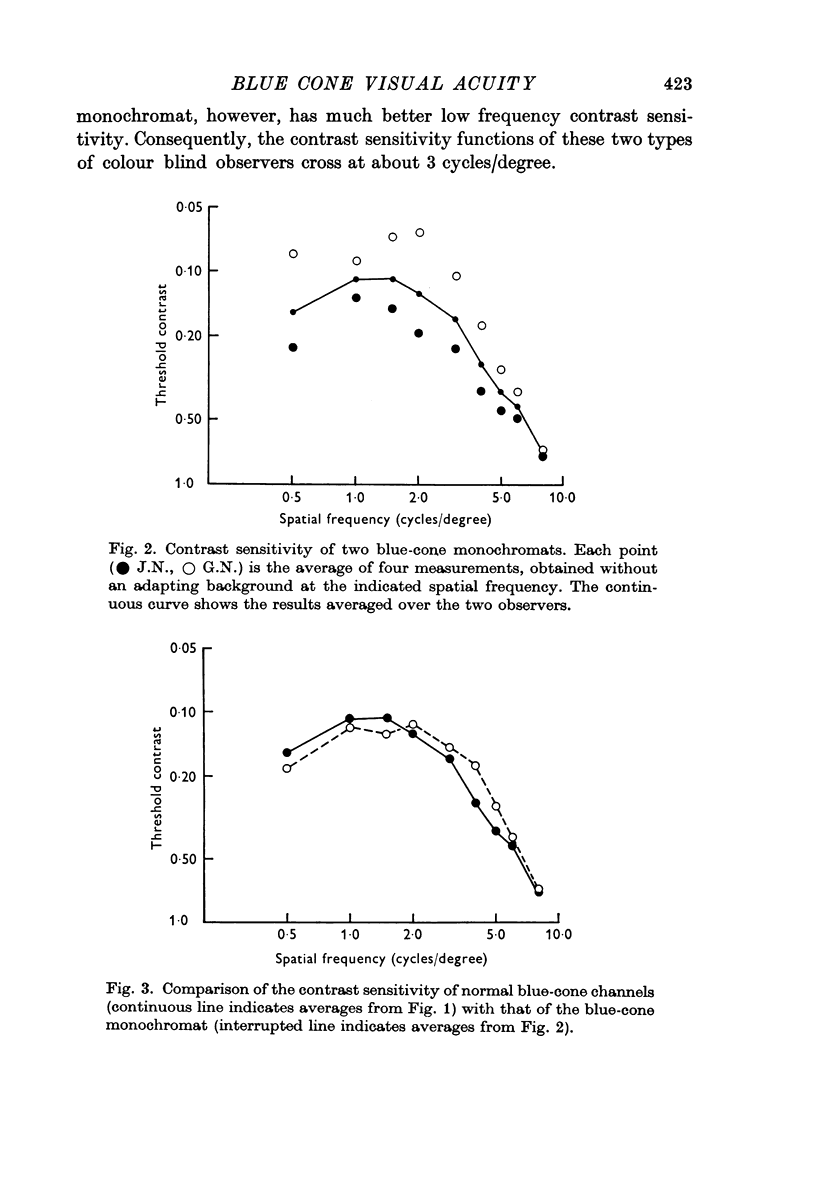
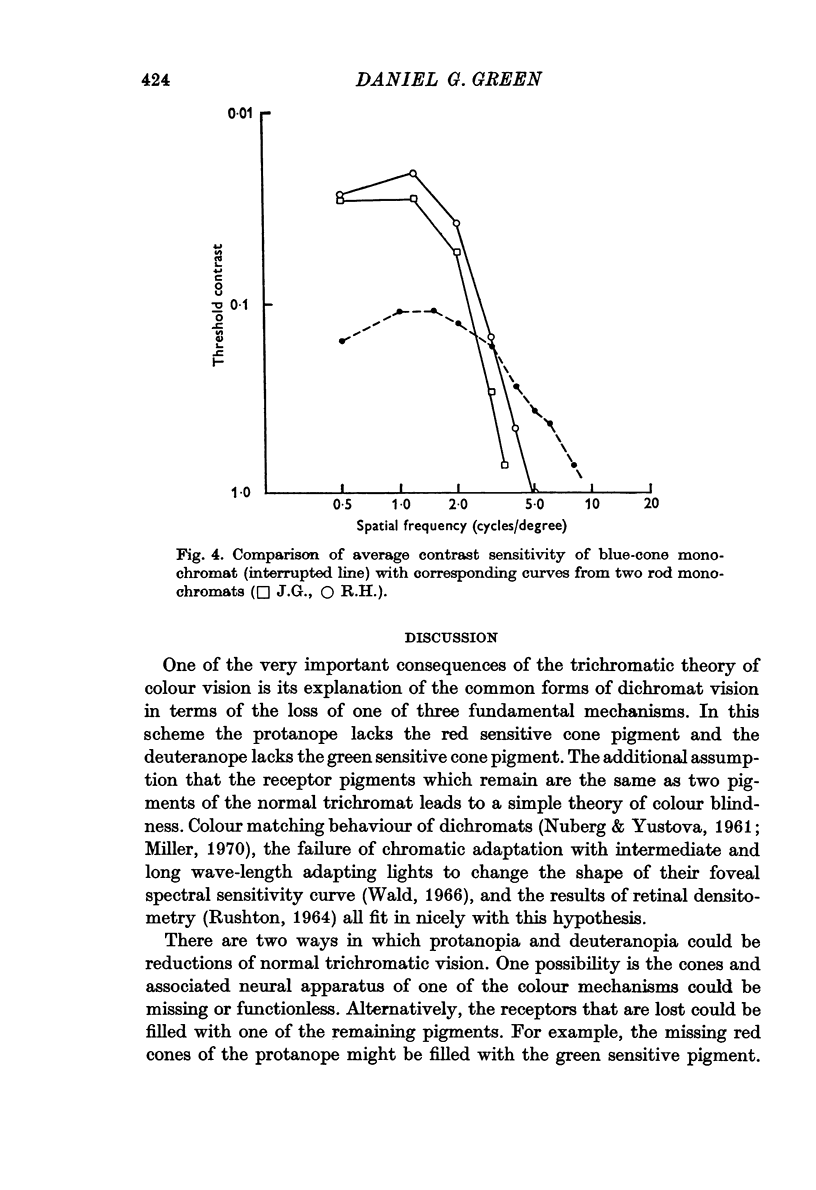
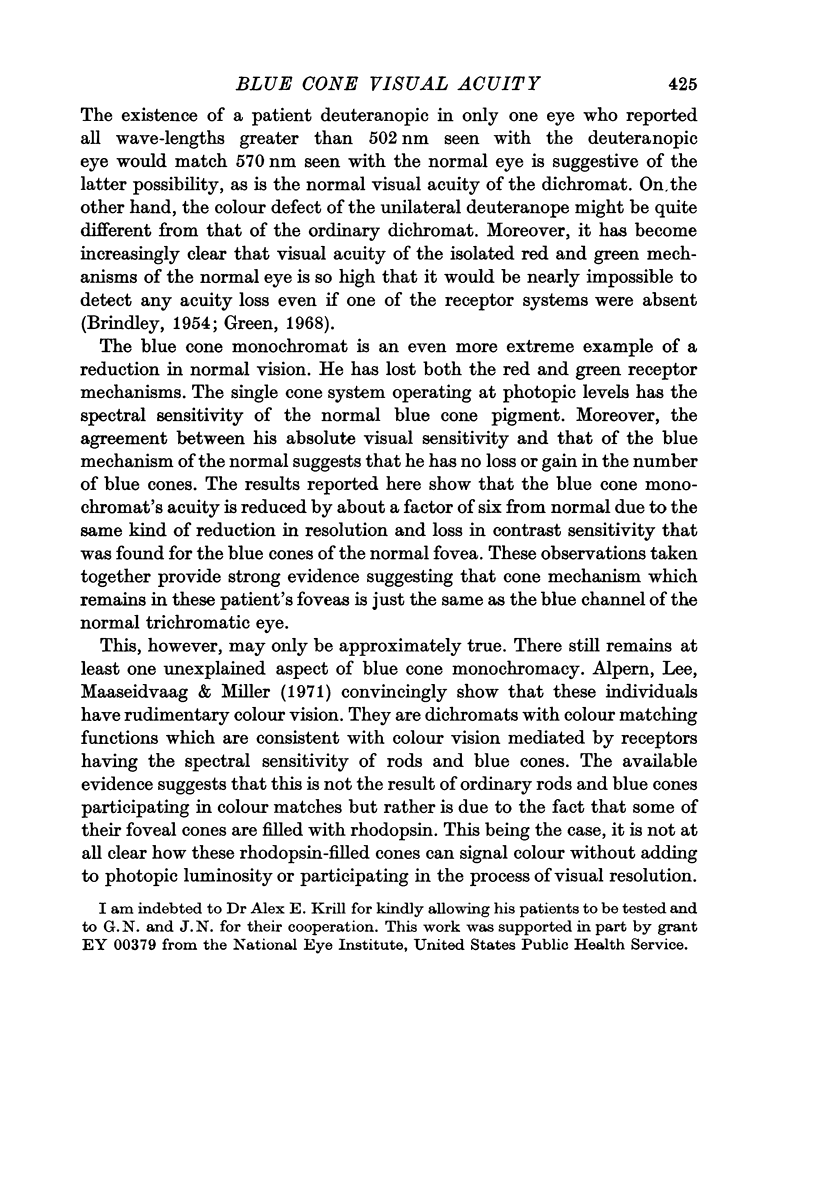
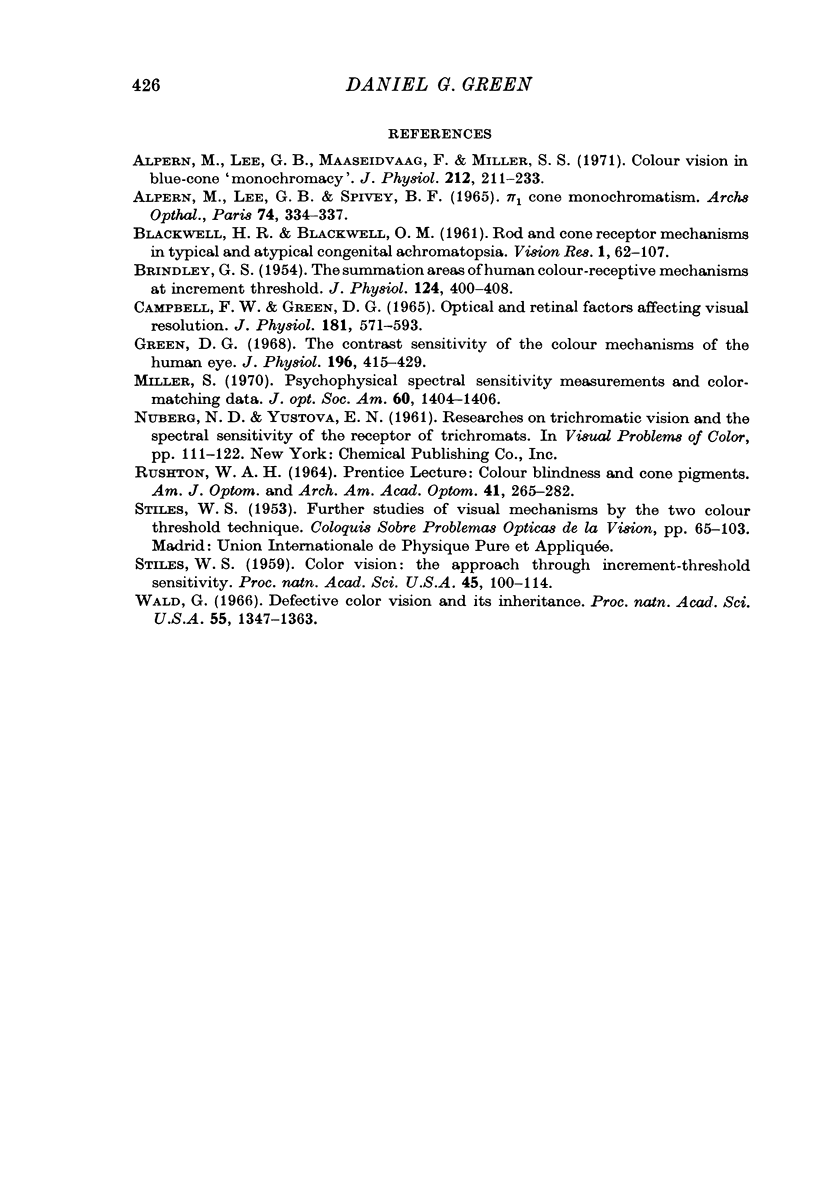
Selected References
These references are in PubMed. This may not be the complete list of references from this article.
- ALPERN M., LEE G. B., SPIVEY B. E. PI-1 CONE MONOCHROMATISM. Arch Ophthalmol. 1965 Sep;74:334–337. doi: 10.1001/archopht.1965.00970040336008. [DOI] [PubMed] [Google Scholar]
- Alpern M., Lee G. B., Maaseidvaag F., Miller S. S. Colour vision in blue-cone 'monochromacy'. J Physiol. 1971 Jan;212(1):211–233. doi: 10.1113/jphysiol.1971.sp009318. [DOI] [PMC free article] [PubMed] [Google Scholar]
- BRINDLEY G. S. The summation areas of human colour-receptive mechanisms at increment threshold. J Physiol. 1954 May 28;124(2):400–408. doi: 10.1113/jphysiol.1954.sp005116. [DOI] [PMC free article] [PubMed] [Google Scholar]
- Campbell F. W., Green D. G. Optical and retinal factors affecting visual resolution. J Physiol. 1965 Dec;181(3):576–593. doi: 10.1113/jphysiol.1965.sp007784. [DOI] [PMC free article] [PubMed] [Google Scholar]
- Green D. G. The contrast sensitivity of the colour mechanisms of the human eye. J Physiol. 1968 May;196(2):415–429. doi: 10.1113/jphysiol.1968.sp008515. [DOI] [PMC free article] [PubMed] [Google Scholar]
- Miller S. Psychophysical spectral-sensitivity measurements and color-matching data. J Opt Soc Am. 1970 Oct;60(10):1404–1406. doi: 10.1364/josa.60.001404. [DOI] [PubMed] [Google Scholar]
- RUSHTON W. A. COLOUR BLINDNESS AND CONE PIGMENTS. Am J Optom Arch Am Acad Optom. 1964 May;41:265–281. doi: 10.1097/00006324-196405000-00001. [DOI] [PubMed] [Google Scholar]
- Wald G. Defective color vision and its inheritance. Proc Natl Acad Sci U S A. 1966 Jun;55(6):1347–1363. doi: 10.1073/pnas.55.6.1347. [DOI] [PMC free article] [PubMed] [Google Scholar]


